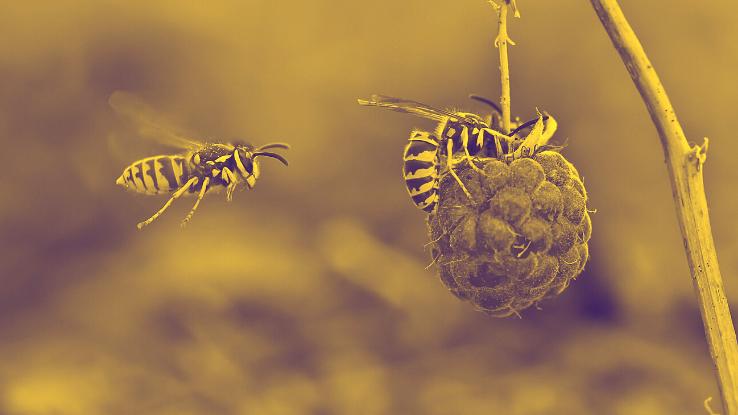
Wasp stings can be incredibly painful. Fortunately, most wasp or bee stings do not present a medical emergency. Rather, there are effective treatments and home remedies for the swelling and pain that come along with a wasp or bee sting.
Common over-the-counter medicines, such as Tylenol and Benadryl, can help you deal with the resulting pain and inflammation as well. Of course, in the case of a severe allergic reaction, a wasp or bee sting may require medical attention. Here, we’ll discuss everything you need to know when it comes to wasp and bee stings, from common symptoms to treatments.
How to Treat Wasp Stings
The first step in treating a wasp or bee sting is to remove the stinger from your body. Anything sharp digging into your skin can be painful, but the venom contained within a stinger can continue to cause more pain overtime. That is, the stinger will release venom so long as it remains embedded in your skin. So, how do you remove it safely?
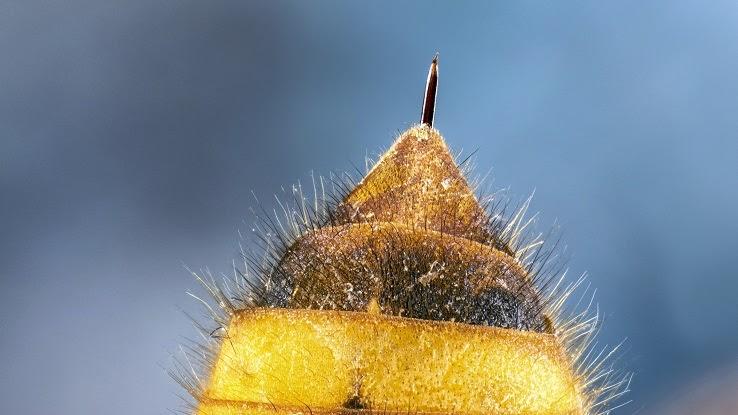
Tweezers can help you pull a stinger out cleanly, but, if you don’t have those handy, gently scraping a credit card over the area can also free the stinger from your skin. Next, it’s important to thoroughly wash the area with soap and water. To further reduce immediate pain, use ice — or some other form of a cold compress — to numb said pain and reduce any inflammation.
Once the initial wave of pain subsides, rub a product like calamine lotion or hydrocortisone cream around the stung area. This will serve as a longer-term relief for any itching, inflammation or pain. If the pain sticks around or is particularly disruptive, pain relievers and antihistamines can be effective choices as they’ll reduce both the pain and inflammation.
How to Treat an Allergy to a Wasp or Bee Sting
The biggest risk of a wasp or bee sting is a serious allergic reaction. Some people can even go into a potentially fatal state of anaphylactic shock after being stung by a bee or wasp. That said, it’s important to recognize the signs of an allergic reaction.
Redness, pain, and swelling at the site of the sting are common, but pain, swelling and even hives in and on other parts of the body — places that haven’t been stung — are often tell-tale signs of a more serious allergic response. For example, your face and lips will often swell during a severe allergic reaction; swelling can even occur in the throat, closing off the airway. Moreover, breathing problems are often signs of anaphylaxis; some people even begin to feel dizzy, lightheaded, or nauseous.

Since venom allergies are often severe, any signs of an allergic reaction should be treated as a medical emergency. Start the course of treatment by taking over-the-counter allergy medication, such as Benadryl or Claritin, at home. Follow up by visiting a medical professional immediately. In some cases, calling an ambulance may be necessary to save someone from a life-threatening allergic reaction. With this in mind, although most people are not allergic to the sting’s venom, anyone who has been stung for the first time should be aware of the potential for anaphylaxis.
People who know they are allergic to wasps or bees should take fast-acting allergy medication, such as an EpiPen, if they have a prescription for it. If you are severely allergic, be sure to see a medical professional — even after using these fast-acting treatments.
Common Health Risks from Wasp Stings
Even without a severe allergic reaction, a person who has been stung by a swarm of bees or wasps should seek medical attention. The sheer number of bites can lead to a stronger inflammatory response, and stronger medicine may be needed to reduce the pain and swelling.
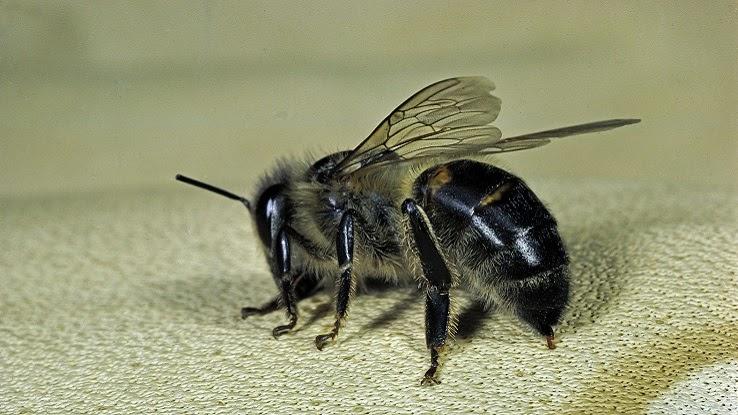
Moreover, anything that punctures the skin carries a risk of infection. Although it is very rare to get tetanus directly from the sting of a wasp or bee, the sting does result in a hole in the skin, which can allow tetanus bacteria to get inside the body. As a result, some professionals recommend a tetanus booster shot after a sting, so long as it coincides with the patient’s vaccination schedule, if the affected area of the skin remains very inflamed for days after the sting(s).
Although it is common for a welt or swelling to remain for several days after the sing, don’t hesitate to visit a doctor if the site is extremely painful, swollen, or red.
Differences Between Wasps and Bees
For someone who has been stung, the difference between a wasp and a bee may seem unimportant — especially if they’re in a lot of pain in the moment. However, recognizing the difference between these two stinging insects can be beneficial.
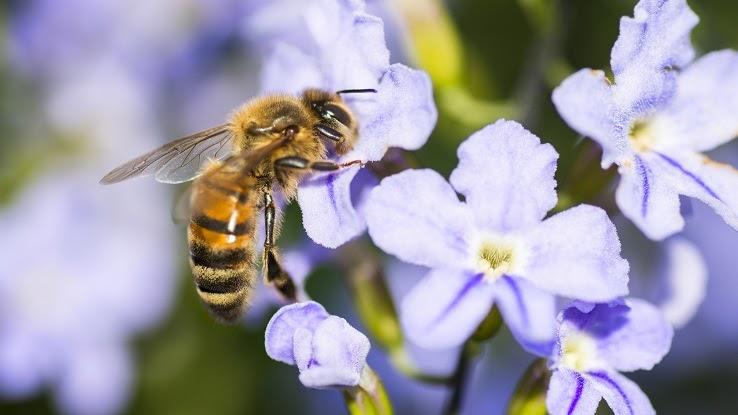
Bees have hair, but wasps don’t as they are generally much sleeker than bees. Bees can be entirely black or brown, but wasps have a distinct black and yellow striped pattern. Finally, bees always leave a stinger in their victim, but wasps rarely do, which means that wasps can often sting the same person multiple times.
Wasp Sting Swelling Remedies
Often, the swelling and itching that results from a wasp or bee sting is more uncomfortable than the initial pain. There are plenty of home remedies to treat this swelling. Manuka honey, for example, has been shown to have some anti-microbial and anti-itch properties. Honey can help to clean the wound of any infection-causing germs and reduce the itching sensation.
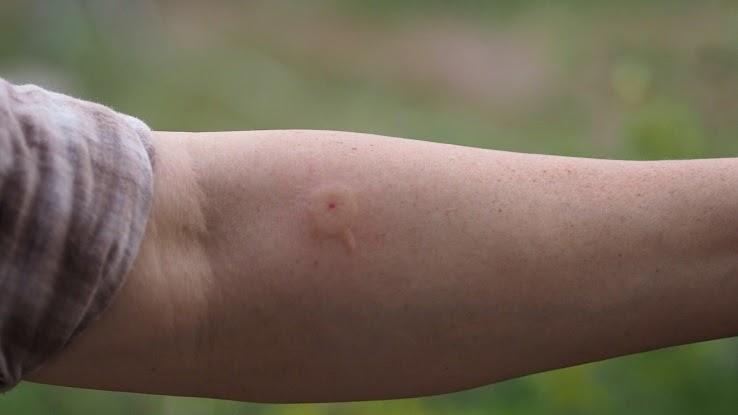
Sometimes swelling is caused by the venom that has remained in the body after the stinger was removed. To help reduce this, make a paste out of baking soda and water and apply it liberally over the sting. Bee venom is acidic, so baking soda can neutralize it.
Resource Links:
- “Fast Treatment for Bites & Stings” via Dignity Health
- “Insect Sting Anaphylaxis” via Immunology Allergy Clinic North America | U.S. National Library of Medicine
- “ABC of Allergies: Venom Allergy” via BMJ | U.S. National Library of Medicine
- “Insect Sting Allergies” via American College of Allergy, Asthma & Immunology
- “How to Tell Honey Bees and Wasps Apart” via Orkin
- “Honey is potentially effective in the treatment of atopic dermatitis: Clinical and mechanistic studies” via Immunity, Inflammation and Disease | U.S. National Library of Medicine





